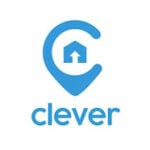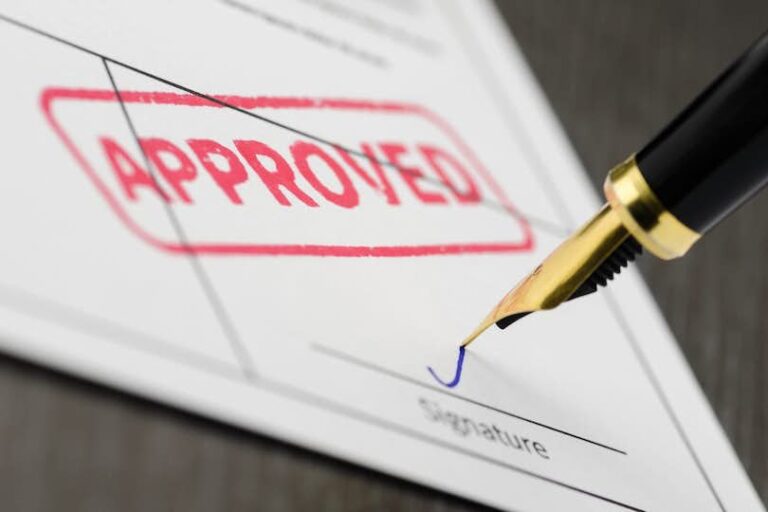When purchasing a home, ensure you can afford the mortgage over the long term. A shorter loan term means you’ll pay off your home faster and save money on interest, but it could mean you’re stressing each month to make your payment. Here are the tools to decide the best option for you.

One of the first decisions you have to make when figuring out how to pay for your new home is which type of mortgage to use. You can choose from an adjustable rate or a fixed-rate, for a typical length of five to thirty years.
Choosing the best option depends on your monthly budget, the current interest rates, and your goals for the future. An experienced real estate agent can help you weigh your options and get you in touch with a great lender.
In the meantime, here’s a primer on some of the most common mortgage options.
The Basic Mortgage Types
Adjustable-Rate Mortgages
An adjustable-rate mortgage (ARM) is just like it sounds — a mortgage where the interest rate can change over the life of the loan. An ARM usually includes two numbers when you’re looking at rates. The first shows the number of years the interest rate is fixed, or stays the same. The second number shows how often in years the rate will fluctuate after this fixed period has passed.
Some of the most common are 5/1 ARMs and 10/1 ARMs — both are typically 30 years in length. For example, on a 10/1 ARM you pay the same interest rate for the first 10 years — usually a low promotional rate. Then, the rate can increase every year after that for the remaining 20 years.
While ARMs may seem like a crafty way for lenders to take advantage of an unsuspecting borrower, they often include a rate cap to avoid drastic, unmanageable interest rate changes. Periodic rate caps limit how much the rate can change year to year and lifetime rate caps limit the overall interest increase over the entire life of the loan.
Fixed-Rate Mortgages
Unlike ARMs, fixed-rate mortgages have the same interest rate — and thus, the same monthly principal and interest payment — for the life of the loan. 30-year fixed-rate mortgages are the most common, but you can also get 15-year, 10-year, or even 5-year mortgages.
The best time to capitalize on the benefits of a fixed-rate mortgage is when interest rates are low (and may increase soon) and you have a good credit score. While you can always refinance a loan if the interest rate drops later, this will often set you back even more in the long run when you consider another round of closing costs.
Confused about mortgages?
A Clever Partner Agent can help you find the right loan for your new home.
10-Year Mortgage
What is a 10-Year Mortgage?
A 10-year mortgage usually means your home will be fully paid off in 10 years, as opposed to the more typical 15- to 30-year mortgages. This means you’ll make higher monthly mortgage payments, but you’ll pay less interest in the long run.
The main option for a 10-year loan is the traditional 10-year fixed-rate mortgage. You’ll pay the same amount in principal and interest each month to your bank and after 10 years, you’ll own your home free and clear. No more mortgage payments. Whoa… let that sink in.
Another option that isn’t technically a 10-year mortgage is the 10/1 ARM. While this loan lasts a full 30 years, the initial interest rate remains the same for the first 10 years. After that, it can change annually for the next 20 years. Which is best for your depends on your personal goals for the future and your monthly budget.
Is it worth getting a 10-year fixed mortgage?
If you can lock in a low interest rate, have a low debt-to-income ratio, and work a steady job with a good income, a 10-year fixed mortgage may be the best option. In fact, you’d save more than $100,000 over the lifetime of a $200,000 loan at a 4% interest rate by opting for a 10-year mortgage over a 30-year.
Plus, mortgages with shorter terms typically come with lower interest rates, so you could save even more — if you can afford those high monthly payments. In this scenario, your monthly payment would be about $1,000 higher with a 10-year loan.
30-Year Mortgage
What is a 30-year mortgage?
Thinking about getting a 30-year mortgage? Congratulations, you’re a typical American. Mortgages with a term of 30 years are the most common — with them, you’ll have your home paid off in 30 years with affordable monthly payments for most incomes.
30-year mortgages can come in the form of a fixed-rate loan or an ARM. Most ARMs are a 30-year term even though its not listed in the name. For example, a 5/1 ARM means your interest rate won’t increase for the first five years, but can then increase each year for the remaining 25 years.
Is it worth getting a 30-year fixed mortgage?
The main reason 30-year fixed mortgages are so widely used is simply that the payments are what most American homeowners can afford. You can always pay extra toward your principal balance, but you’re only on the hook for the lowest possible monthly payment.
Which Is Right For You?
Pros and Cons of a 10-Year Mortgage
With a 10-year mortgage, you pay off your home in a third of the time of a 30-year loan. Talk about freedom! This could allow you to upgrade your pad or simply redirect your monthly mortgage payment to other things like paying off school loans, or traveling more. Plus, as mentioned before, you’ll save tons of interest — both through a lower interest rate and since you’ll be paying on the loan for a shorter period of time.
The drawback to a 10-year mortgage is that it may not even be an option for you. On a $200,000 loan amount, at a 4% interest rate, your monthly payment would be around $2,000. Most Americans can’t afford to set aside that chunk of change each month for one year, let alone 10, especially if you’re paying on school loans or supporting a family.
Pros and Cons of a 30-Year Mortgage
A 30-year mortgage has a more affordable monthly payment, allowing you to afford to purchase a home in the first place instead of renting. Plus, you likely won’t stay in your home for 30 years anyway — you will sell your home and acquire a new mortgage on your new place. A 30-year loan may also free up money each month to pay off your debt with higher interest rates — like a car loan, student loan, or credit card loan, which are notorious for having skyhigh interest rates.
The biggest bummer of a 30-year mortgage is that you’ll be paying on it for three decades! And, you’ll probably end up paying $100,000 or more in interest over the lifetime by opting for this long loan instead of a 10-year one.
Need Help Deciding?
If you’re thinking about purchasing a home and aren’t sure whether to go with a 10-year loan or a 30-year, enlist the help of a local, trusted real estate agent. They can help you weigh your options and connect you with a great lender to run some numbers on your specific situation.
Besides helping you uncover additional cost-savings opportunities, Clever Partner Agents also offer on-demand showings — sometimes in less than an hour — so you know you won’t miss out on that amazing beach house in Miami. Plus, you can get cash back after closing.
Top FAQs About Mortgages
What is the most common mortgage loan?
The most common mortgage type used by homeowners is a fixed-rate mortgage, which represents more than 75% of all home loans. The most popular term length is 30 years. With this type of mortgage, the interest rate is locked in for the life of the loan and the loan is fully paid off over 30 years. Fixed-rate mortgages also come in terms of 15 or 10 years.
What is today's mortgage rate?
As of July 16, 2019, the average interest rate for a 30-year mortgage is 3.83% with an annual percentage rate (APR) of 3.95%, according to bankrate.com. The average for a 10-year fixed is around 2.875%. Since interest rates are highly dependant on your own credit score, your location, and other situational factors, ask your preferred lender for your most current rate, or visit the Consumer Finance Protection Bureau.
Do banks offer 10-year mortgages?
A lot of banks offer a 10-year mortgage option, but it is not as widely used as a 15 or 30-year mortgage. If you choose a 10-year fixed loan, you’ll pay off your house in 10 years and your monthly principal and interest mortgage payment with stay the same each month. A 10-year mortgage is the best option when interest rates are low and you can afford a high monthly payment. This allows you to build equity at lightning speed and potentially save tens of thousands in interest.
Do banks offer 30-year mortgages?
30-year mortgages are some of the most commonly offered loans to home buyers by banks. You’ll pay off your house in 30 years with a 30-year fixed mortgage and your monthly principal and interest mortgage payment with stay the same each month. A 30-year mortgage is the most popular option for homeowners because it has the most affordable monthly payment, while still allowing them to purchase a home instead of continuing to rent.
What is the average 10-year mortgage rate?
As of July 16, 2019, the average interest rate for a 10-year mortgage is 2.875%, according to bankrate.com. With a 10-year fixed loan, you’ll pay off your house in 10 years and your monthly principal and interest mortgage payment with stay the same each month. Interest rates are highly dependent on your own credit score, your location, and other situational factors, so ask your preferred lender for your most current rate.
What is the average 30-year mortgage rate?
As of July 16, 2019, the average interest rate for a 30 year mortgage is 3.83% with an annual percentage rate (APR) of 3.95%, according to bankrate.com. With a 30-year fixed loan, you’ll pay off your house in 30 years and your monthly principal and interest mortgage payment with stay the same each month. Interest rates are highly dependent on your own credit score, your location, and other situational factors, so ask your preferred lender for your most current rate, or visit the Consumer Finance Protection Bureau.
Are there 20-year mortgages?
Some banks offer a 20-year mortgage, but it is not as common as a 15- or 30-year mortgage. If you choose a 20-year fixed loan, you’ll pay off your house in 20 years and your monthly principal and interest mortgage payment with stay the same each month. As of July 16, 2019, the average interest rate for a 20 year mortgage is 3.5%, according to bankrate.com. Interest rates are highly dependent on your own credit score, your location, and other situational factors, so ask your preferred lender for your most current rate.
Is a 15- or 30-year mortgage better?
Whether a 15- or 30-year mortgage is the best option depends greatly on your personal financial situation. If you can afford the higher monthly payments, a 15-year fixed mortgage gives you a lower interest rate and you can pay off your home twice as fast. If your monthly income is limited, the 30-year mortgage may be the best option, as it allows more wiggle room in your monthly budget. Use a mortgage calculator to determine which loan option is best for you based on how much you can afford as your monthly payment, and don’t forget to include insurance and taxes in your calculation.
Is it harder to get a mortgage for an investment property?
A mortgage for an investment property can be a bit more tricky to acquire than that of an owner-occupied residence, but investors get approved for them all the time. Most banks require 20% of the sale price in a down payment when getting a mortgage for an investment property and they usually come at a higher interest rate. You are limited to 10 total mortgages at any one time and your down payment and credit score requirement will likely both increase as you acquire more mortgages. Work with a bank experienced in lending money to investors for the best experience.
How much higher are mortgage rates for investment property?
Interest rates for investment property mortgages are typically 0.5% to 1% higher than those for a owner-occupied residential property. This amount can vary depending on how much of a down payment is paid, whether the property is a single-family residence, a duplex, or an apartment complex, and other situational factors. Banks charge a bit more for investment property mortgages because they assume more risk when taking on the loan. If an investor defaults on a loan, it is more likely that they’ll stop paying the mortgage on an investment property before they get behind on their own personal residence. This is the reason for the higher interest rate for investments.

